Having a new baby in the house can be a very exciting and challenging time for any new or seasoned parents.

Challenges range from what products to get for the child, how to feed the child properly, and many other choices for the parents on how best to raise the baby. The best preparations are to identify these choices and create a comprehensive care plan for the baby.
Basic Guidelines for Looking After a Newborn
Some pediatricians offer a “prenatal visit” where the parents can formulate a detailed personal birthing and care plan under the doctor’s guidance. Here are some of the common recommendations:
1. Holding the baby with care
A newborn does not develop full head control until 4–6 months of age. Thus, neck support is very important when holding a baby. Also, make sure to use a rear-facing car seat and stroller until the baby has adequate neck control.
2. Burping the baby
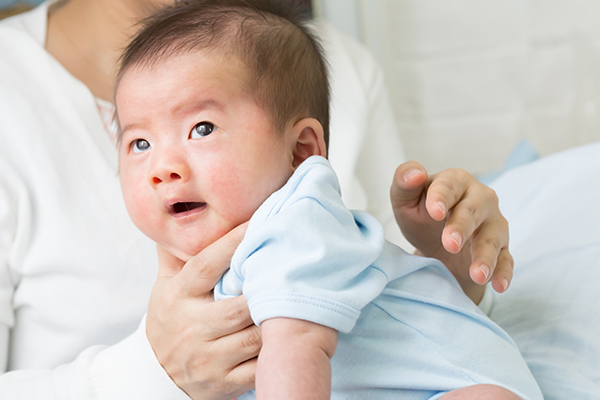
There is a false perception of burping as an effective method of reducing the frequency of reflux/spitting up.
According to the North American Society for Pediatric Gastroenterology, Hepatology, and Nutrition (NASPGHAN) 2018 practice guideline for infantile reflux, the first step to reduce the frequency of reflux in neonates is to avoid overfeeding. (1)(2) The best way to avoid overfeeding is to decrease the volume of each feed but at the same time increase the feeding frequency.
Otherwise, there is no wrong way to burp a baby. Hold your baby sitting up, in your lap, or across your knee. Support your baby’s chest and head with one hand. Cradle your baby’s chin in the palm of your hand. Use the other hand in a cuff position as shown in the picture below to pat your baby’s back.
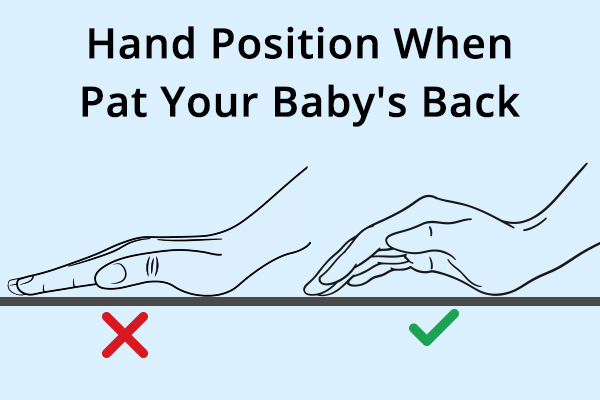
As many parents report, once the baby is burped, he/she is less likely to regurgitate or reflux, but in reality, it is very possible with frequent burping as it gives the baby more time to process the intake. At the same time, frequent burping breaks down the volume of each feeding, allowing for more digestive time.
3. Sponge baths
Newborns should be given sponge baths until the umbilical cord dries and falls off. No submerged baths for newborn babies. There is no one method to sponge bath the baby, but in principle, soak the sponge in lukewarm bathwater and gently clean the baby’s body surface with it.
Nursing staff usually teaches the proper way of sponge bathing the newborn. The first baby sponge bath should take place at or after 24 hours of infant life (in accordance with the WHO protocol) to prevent cold stress. (3)
4. Sleep
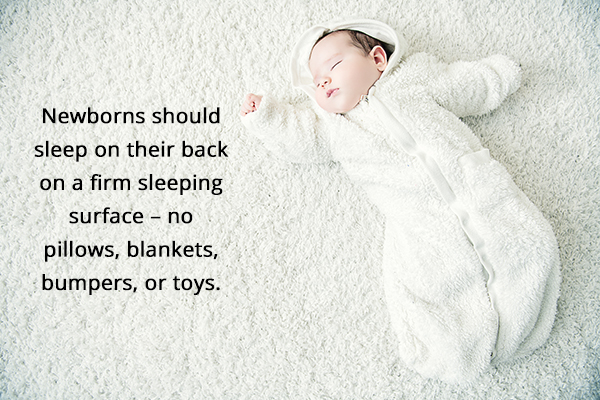
Newborns should sleep on their back on a firm sleeping surface – no pillows, blankets, bumpers, or toys. This is the safest way to sleep to prevent sudden infant death syndrome (SIDS).
To further reduce the risk of SIDS, the American Academy of Pediatrics (AAP) guideline recommends that the baby at any age should never co-sleep with a parent, but sleeping in the same room with the parents until 6 months of age is preferred. (4)
5. Dirty diaper
Frequent changing of newborn diapers will decrease the risk of diaper dermatitis or superimposed infection.
Also, decrease the risk of irritation rash by avoiding the use of wet wipes as much as possible. Instead, rinse with lukewarm water and air-dry or use a low heat setting on a blow-dryer.
6. Hand sanitizer
Use a hand sanitizer before caring for a newborn. Make sure to use no fragrance, and that your hands are dry before getting into contact with the baby.
7. Full-body massage
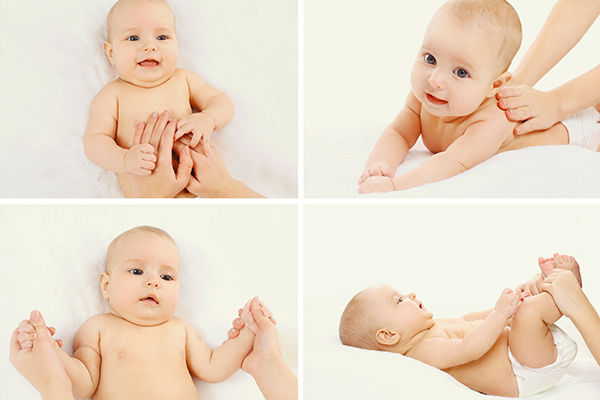
From a pediatrician and lactation specialist’s perspective, infant massage through touch and physical interaction can promote infant-parental bonding.
According to a nurse-massage therapist, newborn massage promotes bonding and relaxation for mom and baby, and abdominal massage is excellent for improving digestion and decreasing gassiness.
8. Applying moisturizer
It is appropriate to apply moisturizer to newborns, especially in dry climates. Make sure to use unscented and noncomedogenic moisturizers. (5) Ointment or cream consistency is the most superior.
9. Never shaking the baby
Newborn babies can be very fragile as their brains are constantly growing. A strong force such as shaking or a fall can cause significant brain bleeding.
With many new parents, the new stressors and challenges of a newborn can cause increased frustrations, leading to shaking the baby as an attempt to pacify them.
10. Umbilical cord stump care
The color of the umbilical cord stump changes from birth to 1–2 weeks. Starting from a gelatinous yellow and white appearance, it transitions to dry brown or black before falling off. (6)
As mentioned above, submerged baths should not be used to prevent infection. Care of the stump includes dry cord care with minimum manipulation. Parents should clean around the area and not use any alcohol or other chemicals so as not to cause excess irritation or inflammation.
11. Vaccinations
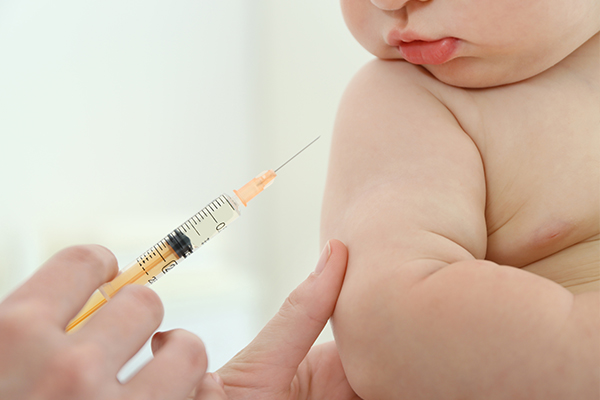
Generally, hepatitis B is given at birth to prevent vertical transmission of disease from mom to baby. A hepatitis B infection in newborns is very likely to result in liver failure.
Hepatitis B vaccination is the single most effective way to prevent vertical transmission of hepatitis B. A single shot of vaccination reduces vertical transmission by 90%–95%. (7)(8) However, despite the comprehensive hepatitis B screening program in the United States, there are still about 1000–2000 cases of vertical transmission of this virus among newborns per year. (9)
The other two preventative medications are erythromycin eye ointment and vitamin K shot. Although these are not technically an immunization, they both are effective in preventing deadly diseases such as blindness and intracranial bleeding in newborns.
Erythromycin eye ointment is very effective in preventing vertical transmission of gonorrhea and, thus, protects the baby from gonococcal ophthalmia neonatorum, an infection that can often lead to blindness. In some states, it is a case reportable to child protective services if a parent declines the administration of erythromycin before discharge.
All newborns are deficient in vitamin K, which is one of the essential nutrients for the blood clotting cascade. The vitamin K level in infants tends to be at its lowest point (termed nadir) at 4–6 weeks of age. Simply giving a baby one shot of vitamin K at birth can prevent dropping of vitamin K to dangerous levels, which can significantly increase the baby’s risk of brain bleeding. (10)
Infants who are exclusively breastfed and did not receive any vitamin K supplementation are at very high risk for intracranial bleeding associated with vitamin K deficiency because human breast milk is low in vitamin K.
12. Immediately after birth
Warm, dry stimulation is recommended following the neonatal resuscitation protocol. Immediately after the baby is born and the baby is doing well, skin-to-skin contact must be done; this is very important for bonding between the baby and mother. It must also include initiating breastfeeding to increase the success of breastfeeding.
After 1–2 hours, the baby is evaluated by the medical care provider and given a vitamin K shot, erythromycin ointment, and hepatitis B vaccination. The baby’s first bath should be delayed (based on WHO protocol) to decrease the risk of hypothermia. (11)
13. Dietary changes for the new mom
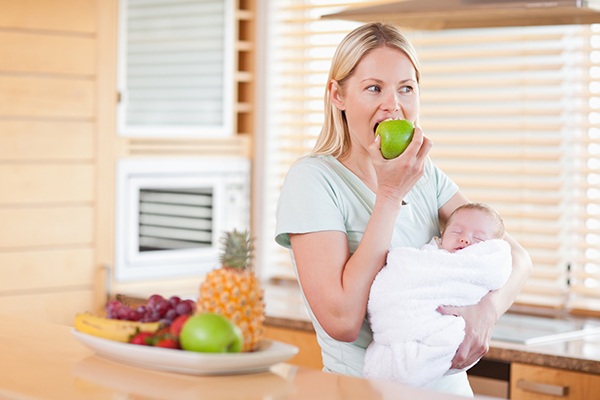
The mother should not feel restricted to a specific diet as long as it is well rounded. If mom has a restrictive diet such as vegetarian, or keto, etc., they should supplement with vitamins to ensure that their breast milk contains all essential vitamins. They can try to eat less processed food and replace it with fresh whole foods to create a well-balanced diet.
The topic of doing an elimination diet while breastfeeding to prevent atopic illnesses such as eczema, allergy, or asthma is very controversial. Most of the studies available on the subject are inconclusive at best.
If the breastfeeding mother cannot make a direct correlation between the baby’s reaction and her dietary intake or the baby has poor weight gain, doing an elimination diet may do more harm than good.
Note: Newborn care resource: HealthyChildren.org is an AAP sponsor and one of the most reliable resources for all pediatrics.
Final Word
Overall, love and care for your newborn and stay happy. Children under the age of 1 need unconditional love, and all of their needs should be met. Also, have a comprehensive care plan for the baby before birth and be patient with the baby.
- Was this article helpful?
- YES, THANKS!NOT REALLY


